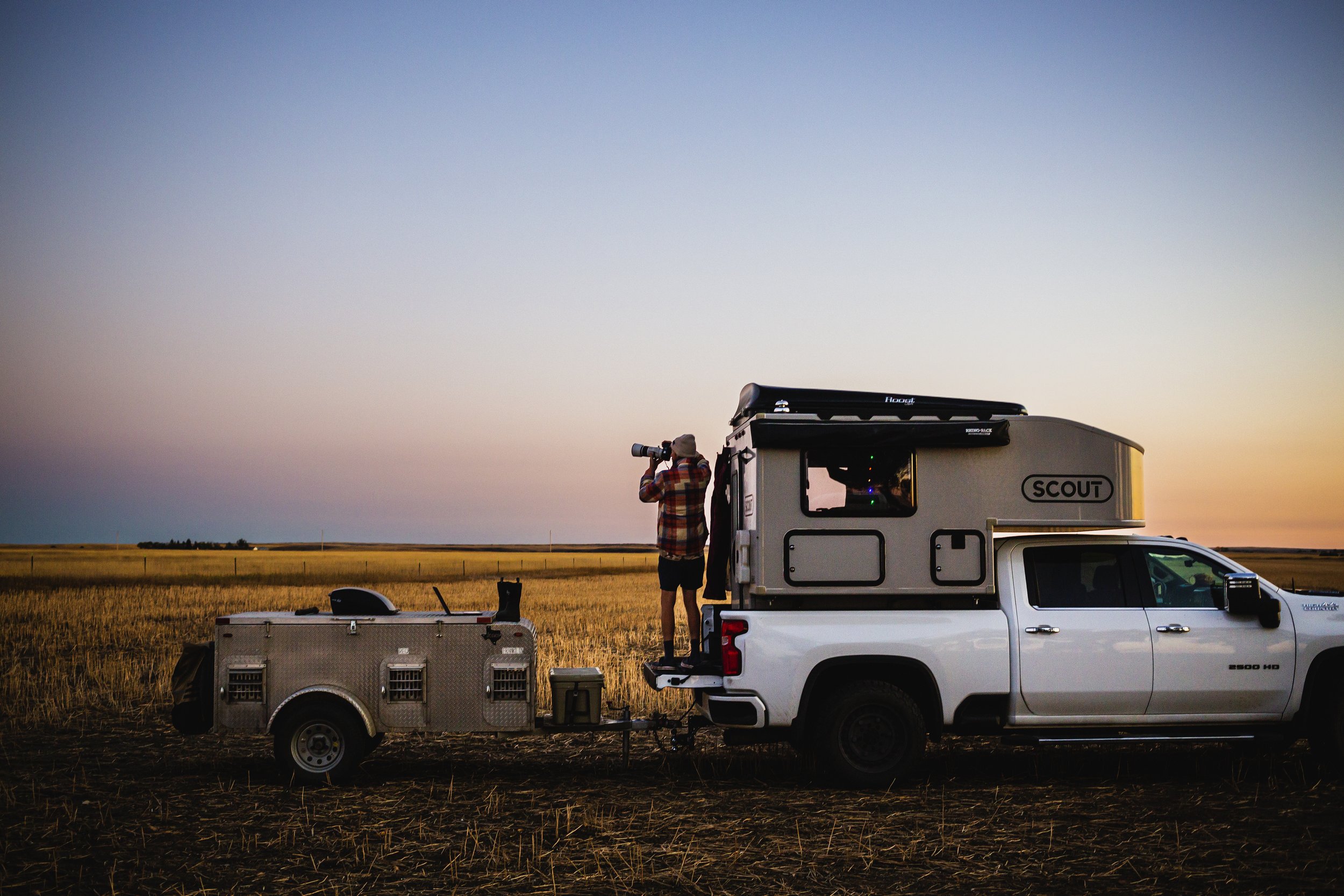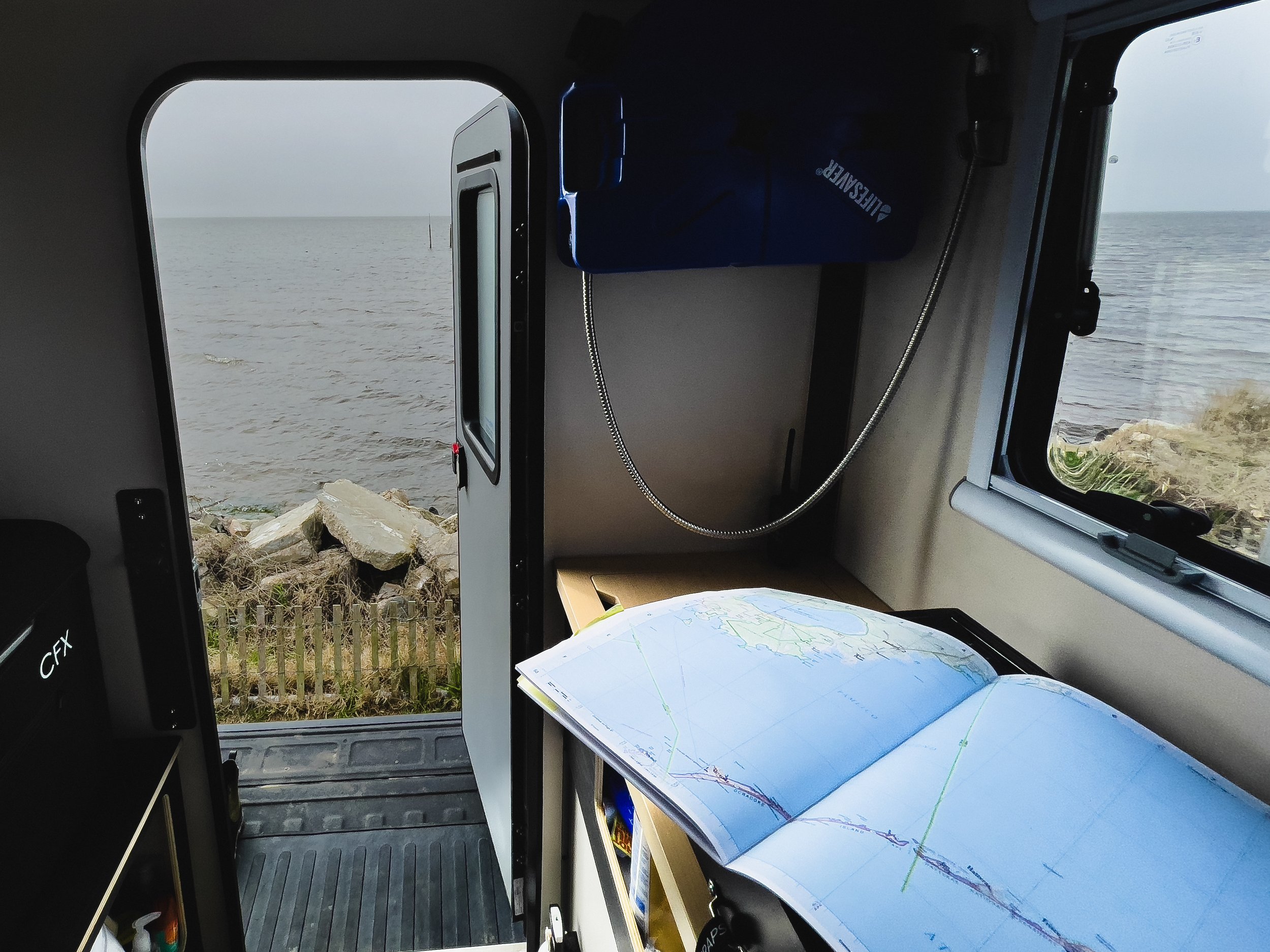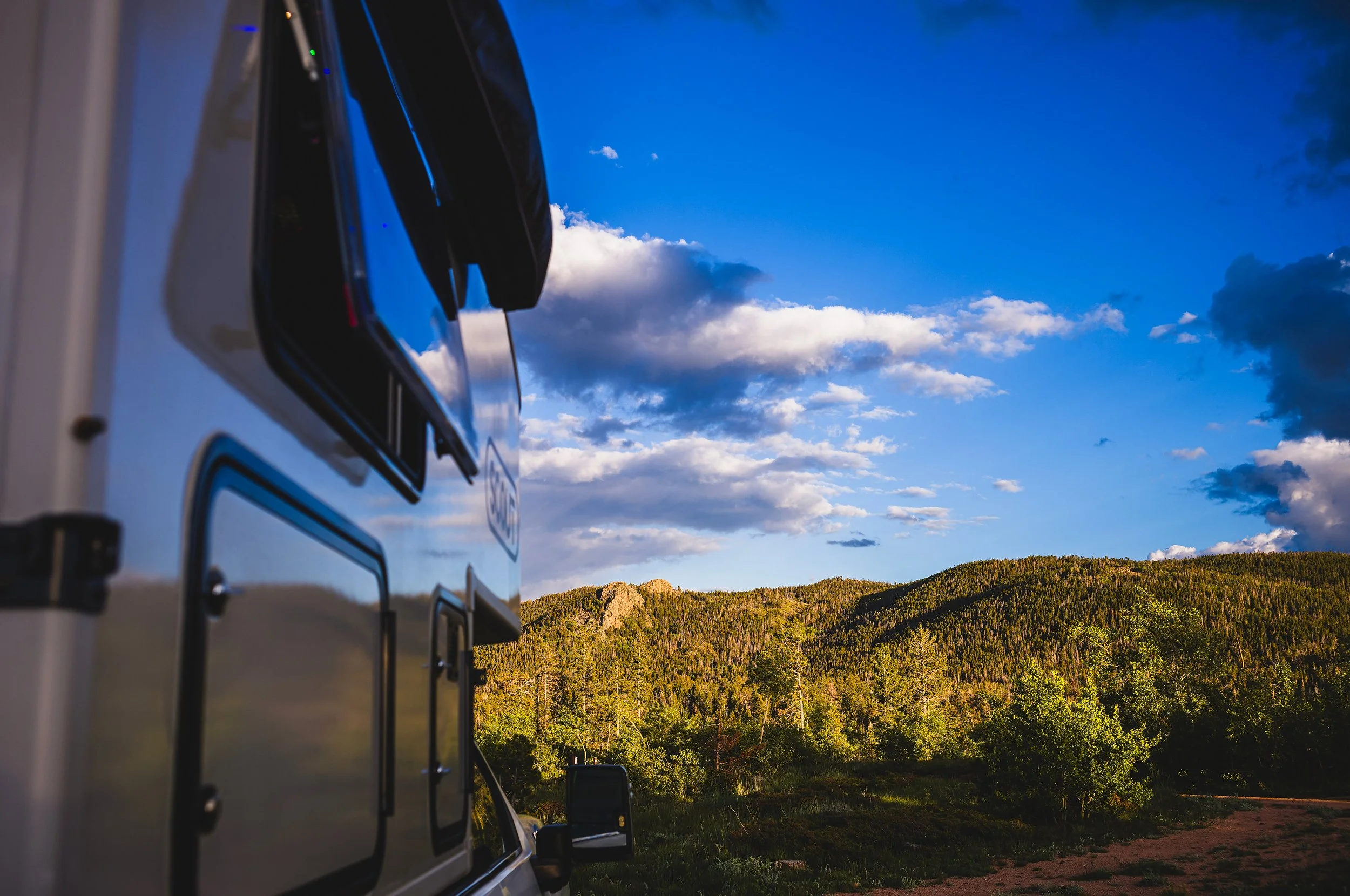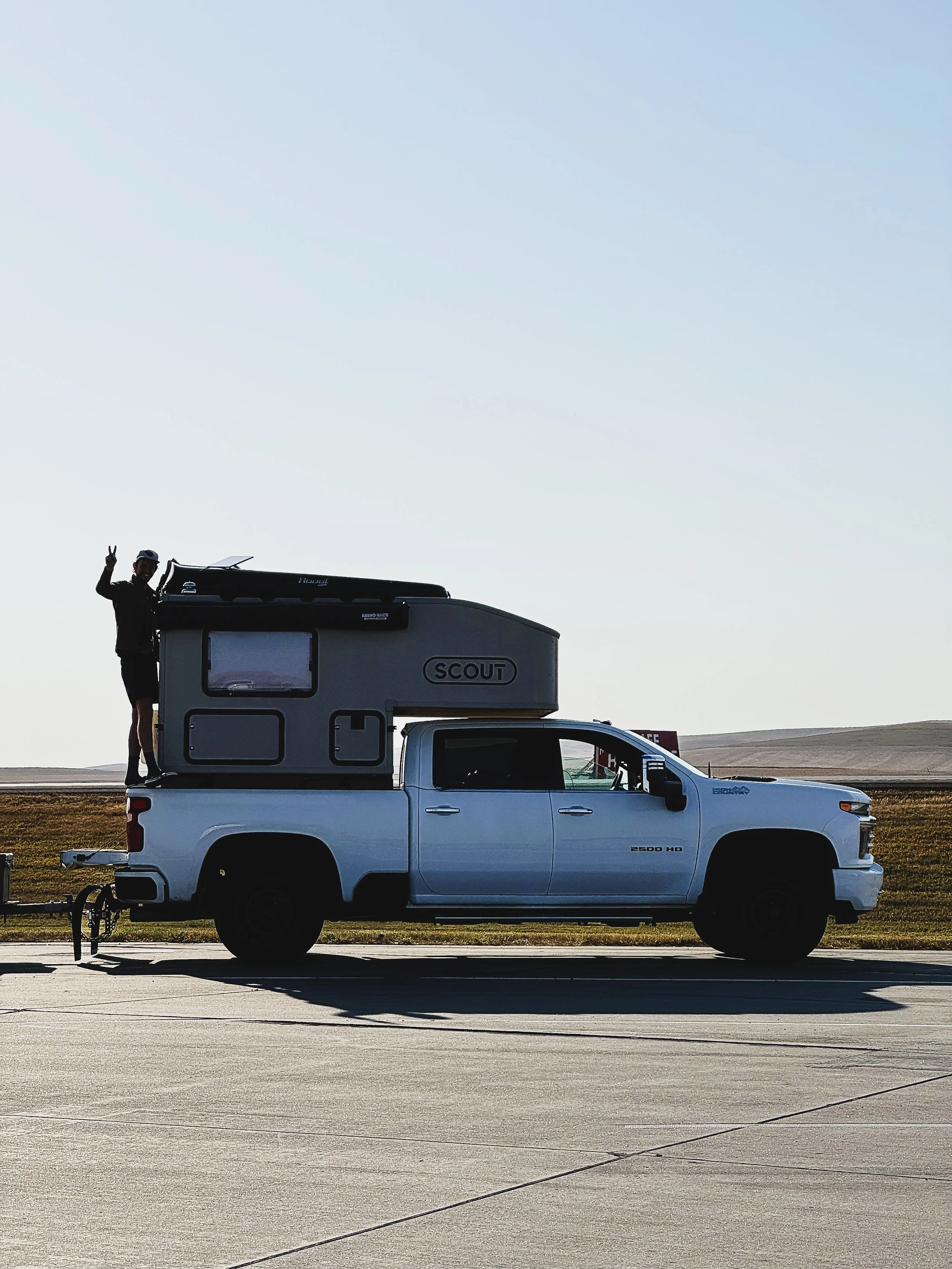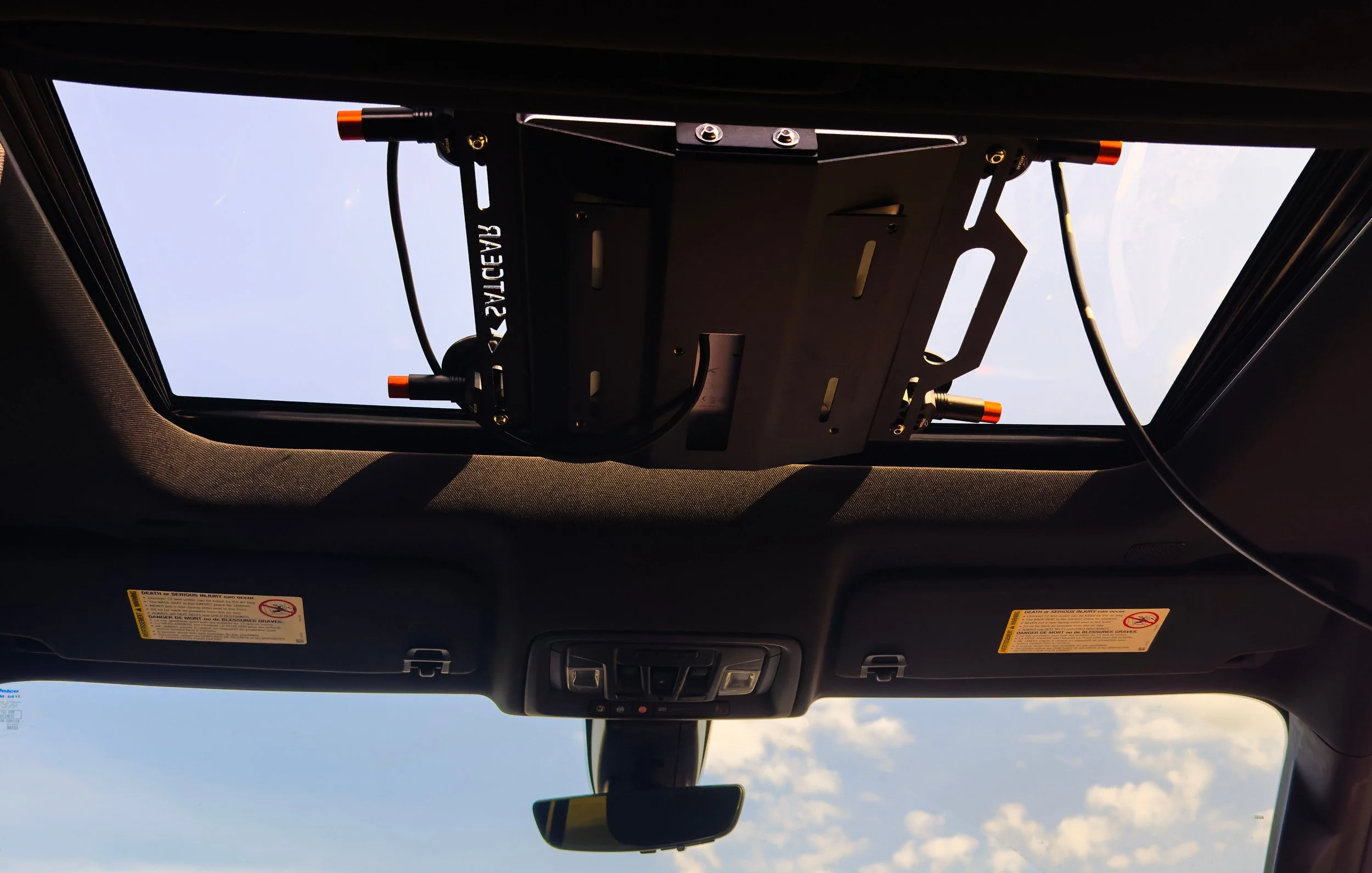The American Road Trip Shopping List
There’s nothing that screams USA quite like a good shopping cart. For your next journey of Eastbound & down, here’s a list of what you’ll be wishing for by mile 500.
OFF THE GRID // Southeast Montana, USA
Over the last 200,000 miles across The United States in a vehicle, I’ve learned there’s a few things you want to make sure you have onboard. From eye-watering luxuries to quick finds from the local hardware store, ignore these at your own peril. You can road trip without any of this gear, it’s all a matter of comfort and convenience. Just don’t find yourself stranded waiting on a prayer (and if you do, roll camera).
Solar Generator //
Tap into the latest in overland tech by picking up a lithium-ion battery in a box. Capable of charging your cell phone hundreds of times, and even the largest of laptops dozens of times, I would toss this into the car before anything else.
Everything runs on a rechargeable battery and you’re going to need something other than a USB port for a cross country sojourn. Personally, I use the Goal Zero Yeti 1500x, and own two of them. I pair this with a not required but quite handy Nomad 200W solar panel. Don’t get carried away yet, you don’t need the panel to take full advantage of a solar generator like the Yeti (Anker, and DJI also make excellent options). You’ll find a 12V plug on the front of each unit - perfect for charging from your car’s cigarette lighter / 12V port. Leave this bad boy on while going down the road and no matter when and where you stop, you’ll have power for overnight. I would suggest at least a 500W unit for even the most basic of road trips. You will unlock considerable capacity if you spend a little more money and jump up to the 1500W series across any of the manufacturers.
A tent for the ages //
You may not be summiting Everest, but The North Face Mountain 25 is a 4 season tent capable of the earth’s most extreme. As an alternate for 3 season use, crawl into the Sea-to-Summit Ikos.
No matter your location in the continental USA, outside of major cities - there’s almost always a place to lay a tent down legally to sleep. I own exactly three - one for four-season double capacity, a three-season double capacity, and yes - still the bivy sack of my childhood nightmares, the Eureka Solitaire. While it’s been some time since I’ve had to deploy the old tarp on the ground, most of what ails you in tent camping can be avoided during a long road trip. Since you’re not backpacking and carrying all your gear into the site, you can afford to bring the best outdoor mattresses that capitalism can dish out. I choose the Thermarest Neo Air. While not cheap, it’s essential if you’re planning on actually sleeping. Opt for a synthetic sleeping bag to avoid the mold that can come with pure down filling (tents = condensation).
The North Face Mountain 25 // my home for the night in Yakima, WA - you can balk at the price tag (~$700), but consider I’ve owned this tent since 2007 and have spent a month of my life sleeping inside.
DeLorme Oversized Maps //
It’s hard to not count on something that never runs out of batteries. In addition to being perpetually “on”, these old school maps are the stuff of road trip legend. My suggestion is to purchase these state by state (roughly $20-30 each) for the states you’re driving through. Over time, you will build a library of a network infrastructure that… well just doesn’t change that often. Priceless is the experience of having a paper printed large map with every official campground in the state listed in geographic location. On our evening in Valley of Fire State Park, without these maps we would have been up a creek. 1” = 5 miles on these maps, so you can actually see details. If you’re worried about paper being up to date, DeLorme is owned by Garmin, the best mapping and GPS technology company in the world. They will not steer you wrong.
A “real” camera //
This can include your iPhone if you’re shooting on Apple RAW mode with one of the Pro grade iPhones, but more on that later. In addition to being a great joy in your life to capture moments forever, documenting your travels with a non-phone based camera is the gift that keeps on giving. Want to remember where you stayed, the name of that restaurant, or scenic drive? This entire website is built from GPS coordinates captured by either my iPhone or Leica cameras. It’s often better than a notebook with the added feature of visual proof. The best place to start is with something with a decent sized sensor (think - the film part of the camera). This is the most important hardware in helping your travel images look more Nat Geo than TMZ. If you’re interested in specific recommendations, keep your eyes out for a Leica Q3 (40mm), or a host of less expensive options with a Canon or Fujii.
You simply can’t go wrong with nearly any Leica, Canon, Fujii, or Hasselblad. Choose as you please, but your travels are worth documenting.
Moleskin Notebook //
Say what you want about the price tag, but I’ve been using these little black books for twenty years. What initially began as a quick place to scratch down caption information during a trip to Rome in 2010 morphed into a lifelong obsession with paper notebooks. Field notes are a great considered alternate, and you can even find them in NPS limited edition designs. I use a combo to document trip notes along with important info you can scratch down before departure - confirmation numbers, trail names you’ve researched, etc. Bonus points if you spring for the graph paper lined editions. Considering I was cursed blessed to be left handed, you never know when you need to flip it into landscape and start drawing.
Milwaukee Air Compressor //
I get it, you think I’ve lost my mind. You just haven’t met the M18 Inflator from Milwaukee. Although this is not the cheapest thing on the list, it’s a long way from being the most expensive. As you fall down the road trip -> overland camping rabbit hole, you’ll quickly learn that onboard air is pretty darn important anytime you’re traveling more than a few hundred miles. Before you go nuts and start adding onboard air compressors in the engine bay of your vehicle (and they make some great one’s that run straight off the alternator), buy one of these. A few hundred dollars of tool + M18 battery later and you’re ready to roll with the best tire pressure tool I’ve ever used.
To put this in some perspective, I have a contractor grade 60G air compressor on my farm that runs all my pneumatic tools. I have over 50 wheels between tractors, vehicles, trailers, etc and when it’s time to dial in the PSI for each, it’s the Milwaukee I reach for. Keep this in a small carrying case in the trunk or back of your truck for the next time you need to dial in the exact PSI. Hit one button, wait a minute and you’re in business. Also super helpful for the shoulder seasons when you go to sleep in what feels like spring and wake back up in the darkest of cold winter with low tire pressure.
Leather Gloves //
I’m not here to tell you exactly what to buy, just why to buy. Road trips are filled with gas stations. Gas stations are disgusting places at the pump. Do yourself a favor and have a one size too big set of gloves stuffed in your drivers side door. Every time you hop out to fill up, you don’t have to worry about the disgust that lies on the pump or have gas dripping all over your hands. There’s endless scenarios you hope to never need to prepare for when a set of good leather gloves will make the day. Drive over to Tractor Supply or Home Depot and go nuts.
A Yeti Cooler //
If you’re teleporting in anything but a pickup truck, buy the soft sided model. If you’re like me and tow a trailer or have a truck bed, buy the biggest one you can afford or fit in your rig. I’ve had more coolers in my 37 years than you can shake a stick at. Only my Yeti products have lasted through more than a decade of hard abuse. I’ve got a 2012 model Yeti roadster that has been across the country 15 times and lived outside for over two years on my farm. I think it’s just getting broken in. If you have an SUV or car, the soft-sided coolers will make packing a lot easier. Keep this sucker right behind the drivers seat or easy access from the trunk if you must. Every other gas station you can drain and reload, or take the high road and drop some additional coin on the Yeti Ice for far less of a mess and double the cold time.
Starlink Mini //
You can love or hate Uncle Elon, but one thing is for sure - there’s no other company in the world that’s created a low earth orbit of satellites for your overland data pleasure. I saved the best for last - I’ve owned three generations of SpaceX Starlink kits and been a loyal customer since the launch of the “better than nothing” beta program on my farm in early 2021. My current sat weapon of choice is the Starlink Mini. The size of a large iPad, this little sucker will cure whatever ails you. Using only 30-40W of power draw, it can sip from your Goal Zero for days on end without you needing to see the sun. As I’ve written about previously on this website, I consider having a data connection an essential safety component to any overland trip. If you’re reading this list planning on driving across the country, you would be a fool to ignore the potential of having home grade 200MBPS down wifi at your fingertips. From booking campgrounds when you have no signal, to hopefully never needing emergency services - if you’re worried about the price, prorate the plan and purchase data one month at a time. I have mine suction-cupped to the sunroof of my truck, but mounting solutions abound to fit your exact needs.
Tarp in a Bag //
If you think I’m nuts, you’ve never been stuck in inclimate weather on the road. A wise man once taught me a few techniques from an old book called “fun with tarps” - I’m not f*ing kidding - just talking about the type of encounter you only hope to expirence a few times in life. After watching him construct a shelter capable of a Yellowstone filming during a cattle round-up, I learned there’s almost nothing you can’t do with a few tarps and a broomstick. Although I couldn’t find the out-of-print edition he was referencing - here’s a considered alternate for your review. I’ve deployed the ole tarp + broomstick trick across the USA for everything from sun shelter in Montana (the photograph below), to a hail shelter for my six figure diesel truck in the Outer Banks near Hatteras. Just don’t forget a tarp’s best friend - paracord.
Overlanding fun with tarps // When you’re boondocking out in the Great Plains, protection from wind is your friend. For a quick pop-up shelter to stash your camp chairs, coolers, and battery banks away from the elements while you’re out exploring, it’s hard to beat the good old fashioned hardware store tarp.
NOTE // As with all things on this website, I’m not sponsored and have ZERO affiliate deals with these companies. I’m telling you about these products from an editorial standpoint because I trust them with my life on the road. See, now don’t you feel just a little bit better knowing I spent my own hard owned money on all of the above?
I maintain an always growing database of editorial and inspirational travel locations within the United States, including 50+ campgrounds and boondocking locations to try out all this new gear - you can find The Travel Library linked here, or in the top navigation of the website. Now go travel!
